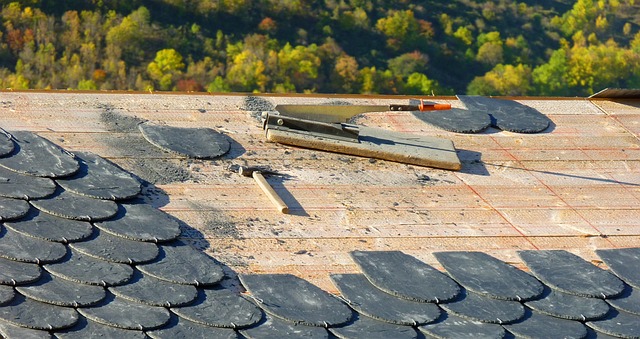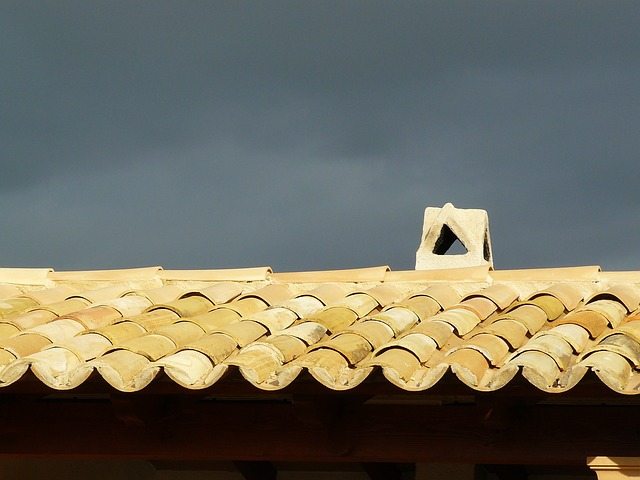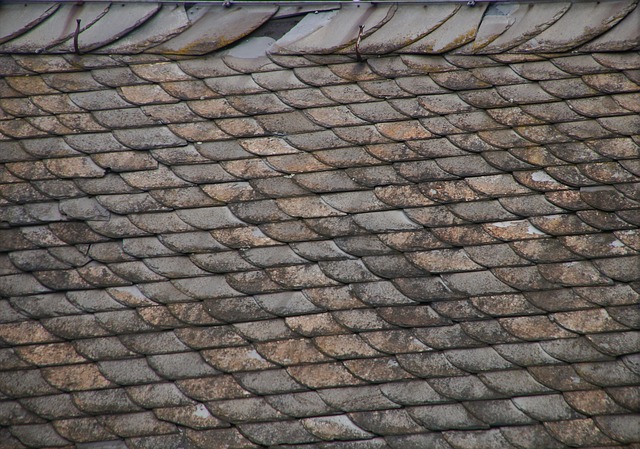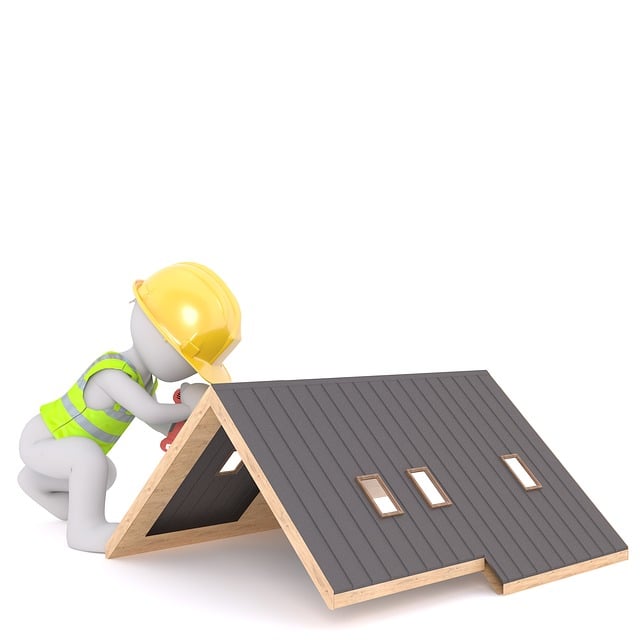Modern roofing technology has undergone a significant transformation with the advent of precision measurement tools like laser scanning, drone imagery, and 3D modeling software. These technologies offer substantial benefits over traditional methods, including cost savings, improved worker safety, and precise material estimations. Laser scanners efficiently capture a roof's contours and dimensions, while drones provide comprehensive aerial views. The combination of these tools ensures a thorough assessment of roof structures. Roofers leverage this high-tech synergy to enhance project execution, leading to increased efficiency, better quality work, and higher customer satisfaction. Laser scanning technology specifically allows for non-invasive, precise measurements with high-resolution laser beams, creating detailed 3D models that reveal hidden defects and facilitate targeted repairs or installations. Additionally, thermal imaging has become a crucial diagnostic tool in the roofing industry, enabling rooftop defect detection without physical intrusion and improving energy efficiency by identifying areas of excessive heat loss or gain. These technological advancements have elevated industry standards, making roofers more precise and efficient while offering clients detailed assessments for informed decisions on maintenance and repairs.
2023 has marked a pivotal point in the roofing industry, where the integration of advanced technologies has revolutionized the traditional craft. Today’s roofers harness precision measurement tools that not only enhance accuracy and efficiency but also drive innovation across the board. This article delves into the transformative impact of cutting-edge technologies on modern roofing practices, from laser scanning to drone surveys, GPS technology, AI integration, and beyond. Each section unravels a new layer of technological sophistication that reshapes the landscape of roof analysis, installation, waterproofing, and maintenance. As we explore these developments, it becomes clear that the future of roofing is not just about building structures but also about constructing smart, durable, and sustainable solutions for years to come. Join us as we navigate this technological renaissance and understand how roofers are evolving to meet the demands of a world where precision is paramount.
- Precision Measurement Technologies Transforming Modern Roofing
- The Role of Laser Scanning in Accurate Roofer Assessments
- Thermal Imaging: A Game-Changer for Roofer Diagnostics
Precision Measurement Technologies Transforming Modern Roofing

Modern roofing has undergone a significant transformation with the advent of precision measurement technologies. Roofers now employ sophisticated tools that combine laser scanning, drone technology, and 3D modeling software to achieve unprecedented levels of accuracy in their measurements. These advanced methods have replaced traditional manual techniques, offering benefits such as reduced labor costs, increased safety for workers, and more precise calculations of material requirements. Laser scanners are particularly useful as they can quickly capture the exact contours and dimensions of a roof, accounting for its complex shapes and intricate details without having to physically traverse its surface. This data is then processed by software that generates detailed 3D models, allowing roofers to visualize and plan the installation or repair process with greater precision.
Furthermore, the integration of drones in the roofing industry has opened new horizons for survey and inspection tasks. Drones equipped with high-resolution cameras and sensors can collect aerial data that complements the information obtained from ground-based laser scanners. This dual approach ensures that no angle or feature is overlooked, providing a comprehensive dataset for accurate measurements and calculations. The resulting synergy between human expertise and cutting-edge technology enables roofers to execute projects with greater efficiency, improved quality, and enhanced customer satisfaction. These precision measurement technologies are not only changing the way roofs are measured but also how they are designed, built, and maintained, setting a new standard in the industry.
The Role of Laser Scanning in Accurate Roofer Assessments

Laser scanning technology has revolutionized the way roofers assess and measure structures for repairs, maintenance, or new installations. This non-intrusive method employs laser beams to capture precise measurements of a building’s geometry, providing detailed data that can be used to create a digital 3D model. The high-resolution scans offer an accurate representation of the roof’s condition, including identifying hard-to-reach areas or subtle irregularities that might otherwise go unnoticed. This precision ensures that any subsequent repairs or replacements are tailored with exact specifications, leading to a more durable and effective solution. Additionally, laser scanning minimizes the need for physical measurements on site, reducing the risk of human error and improving safety for roofers who no longer have to navigate potentially hazardous conditions to gather information. The resulting data is invaluable for roofers, as it allows for better planning, more accurate cost estimates, and the ability to document the condition of the roof over time for maintenance purposes. This advanced technology not only streamlines the assessment process but also contributes significantly to the longevity and integrity of the building’s roofing system.
Thermal Imaging: A Game-Changer for Roofer Diagnostics

In recent years, thermal imaging has emerged as a pivotal tool in the roofing industry, transforming the way roofers diagnose and address issues on residential and commercial structures. This non-invasive technology enables professionals to detect hidden defects such as moisture intrusion, insulation gaps, and air leaks by capturing the heat patterns emanating from a building’s roof surface. The high-resolution imaging allows roofers to pinpoint anomalies with remarkable precision, which is crucial for preventing long-term damage and ensuring the longevity of the roofing system. The added benefit of conducting these scans during various weather conditions means that roofers can diagnose problems even under challenging environmental circumstances, making thermal imaging an indispensable component of modern roof diagnostics.
The integration of thermal imaging has not only enhanced problem-solving capabilities but also elevated the level of professionalism within the roofing sector. By leveraging this advanced technology, roofers can provide their clients with a more thorough and accurate assessment of their roof’s condition. This leads to informed decision-making regarding repairs, maintenance, or even complete replacements. Moreover, the use of thermal imaging contributes to energy efficiency by identifying areas where heat is being lost or gained excessively, thereby allowing for targeted improvements that can significantly reduce energy costs for building owners. The adoption of this sophisticated technique underscores the commitment of the roofing industry to innovation and excellence in service delivery.
Roofing professionals are now equipped with sophisticated tools that have revolutionized the way they assess and diagnose roof conditions. Advanced technology, particularly laser scanning and thermal imaging, has become integral to the trade, offering precision measurements that ensure accurate evaluations. These innovations not only enhance safety by reducing the need for physical inspections on potentially hazardous surfaces but also provide invaluable data for making informed decisions regarding roof maintenance and repairs. As the industry continues to evolve with these technologies, roofer expertise is elevated, leading to improved outcomes and customer satisfaction. This advancement in precision measurement technologies underscores a new era in the realm of roofing, where cutting-edge solutions pave the way for smarter, safer, and more efficient practices.



